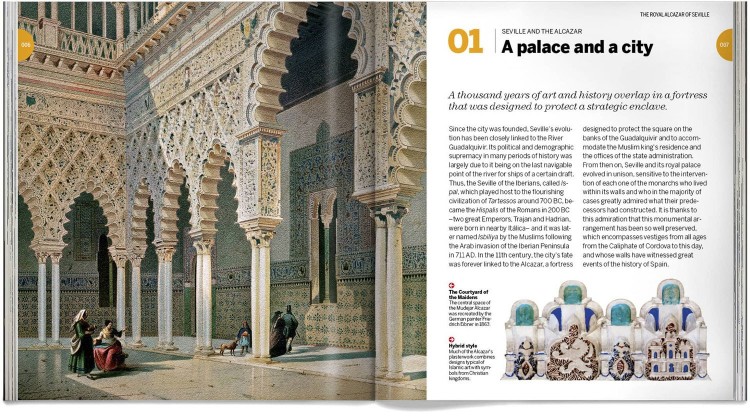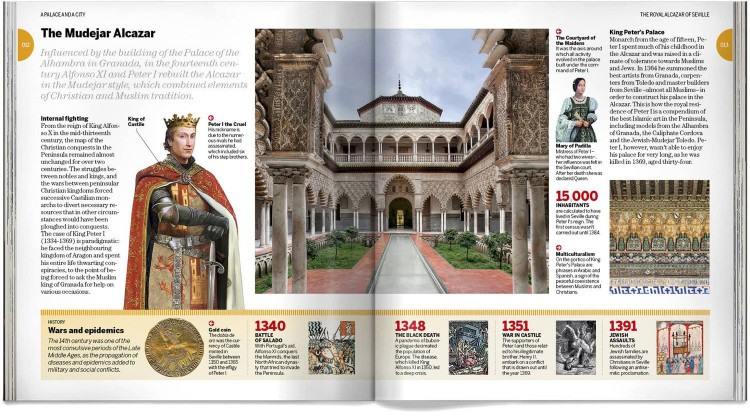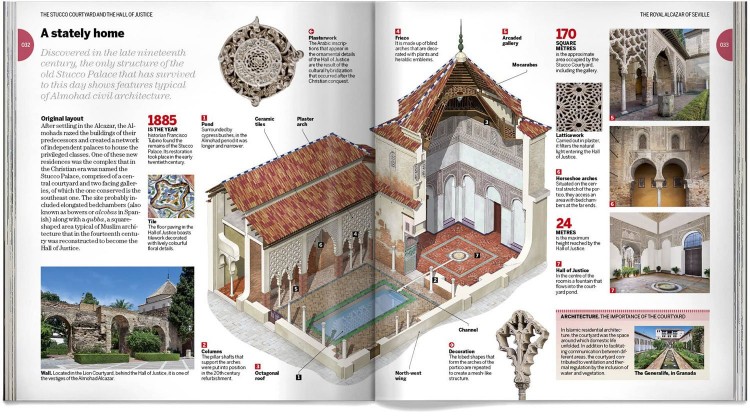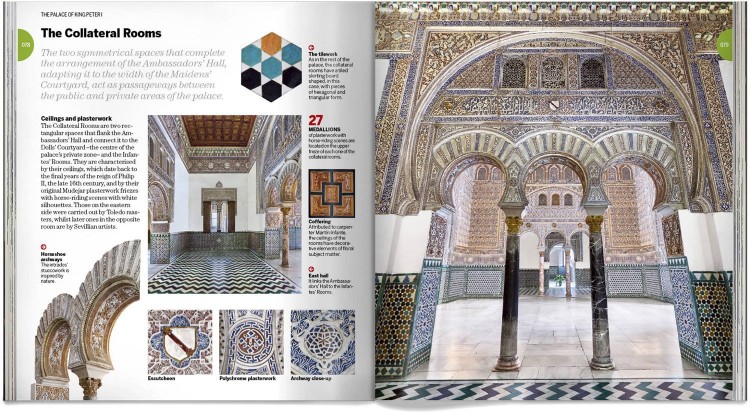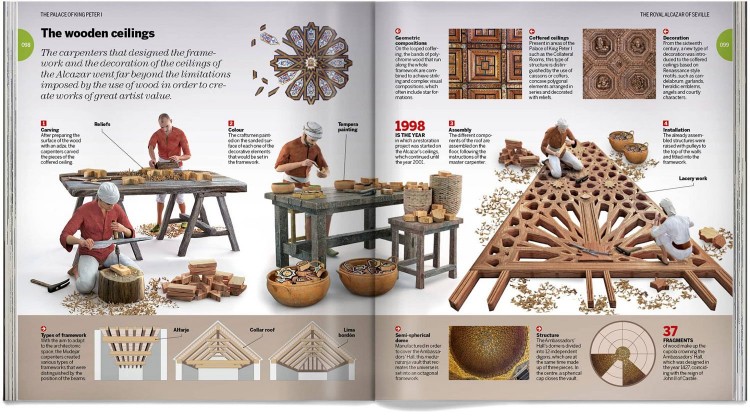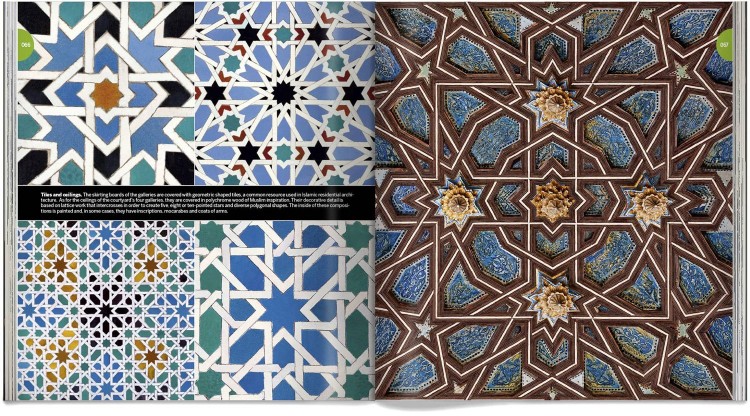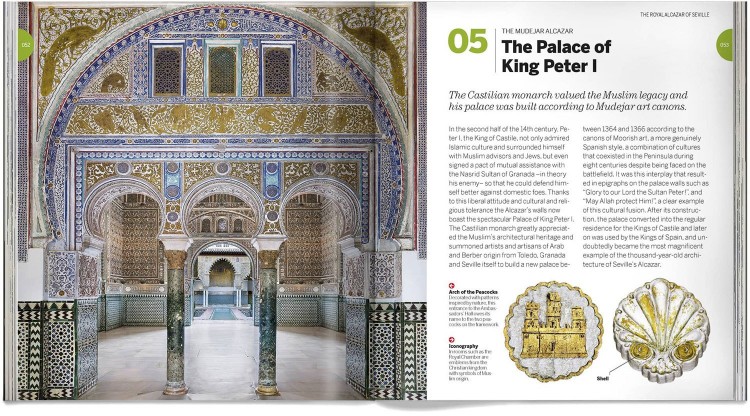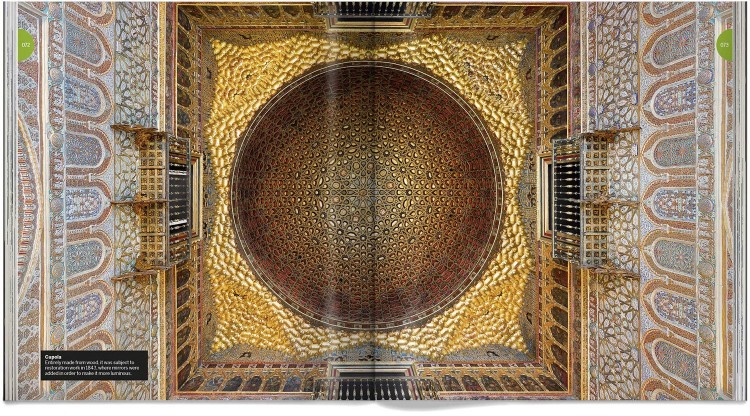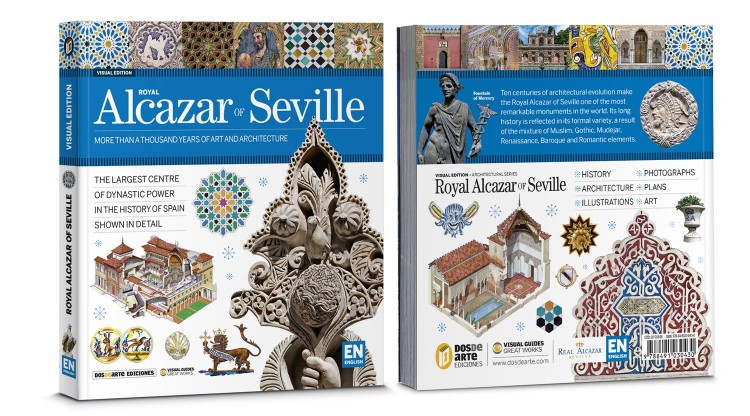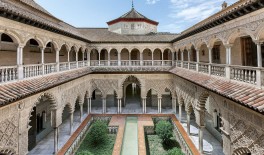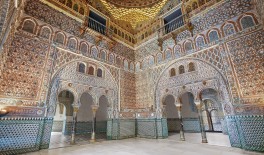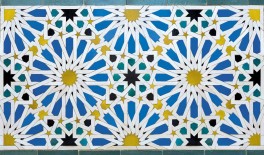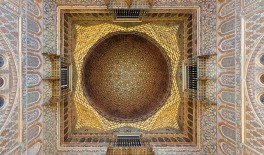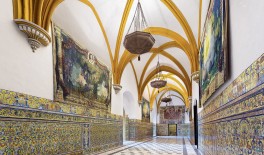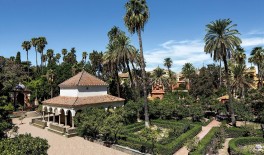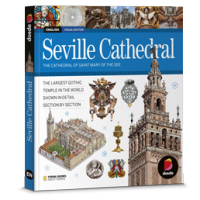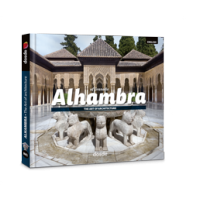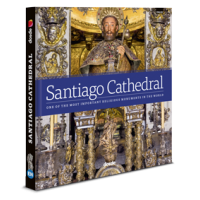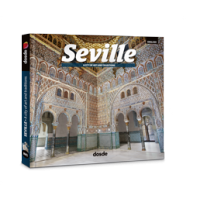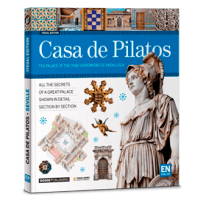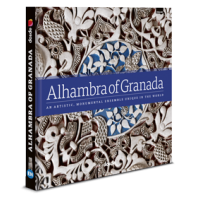Royal Alcazar of Seville
More than a thousand years of art and architecture
RETURN
About the book Alcazar of Seville
Devised in the 11th century as a fortress to protect the Muslim authorities, the Alcazar of Seville is the oldest royal palace in use in Europe. The long drawn-out history of this singular monumental ensemble is reflected in this book on the Alcazar of Seville, one of the most comprehensive works published on this masterpiece of architecture.
This book on the Alcazar of Seville covers the origins, the historical context and the architectonic evolution of this unique monument, linked to the periods of great splendour of the city of Seville and considered as one of the most eminent architectonic sites in the world, as was demonstrated in its inclusion in 1987 on the Unesco World Heritage Site list.
By means of the seven chapters that the book is divided up into and published by Dosde, the reader can embark on a fascinating tour of this emblematic monument, which has witnessed some of the most important events in the history of Spain. Its pages include more than 300 high quality photos of the Alcazar of Seville, as well as drawings and full 3D illustrations. A privileged look at a work of incalculable artistic and architectural value.
This book on the Alcazar of Seville covers the origins, the historical context and the architectonic evolution of this unique monument, linked to the periods of great splendour of the city of Seville and considered as one of the most eminent architectonic sites in the world, as was demonstrated in its inclusion in 1987 on the Unesco World Heritage Site list.
By means of the seven chapters that the book is divided up into and published by Dosde, the reader can embark on a fascinating tour of this emblematic monument, which has witnessed some of the most important events in the history of Spain. Its pages include more than 300 high quality photos of the Alcazar of Seville, as well as drawings and full 3D illustrations. A privileged look at a work of incalculable artistic and architectural value.
Visual Edition
Royal Alcazar of Seville
Multilanguage: Available in 8 languages
Made with environmentally friendly paper
Official licensed product
"Premio Clap" Best Design category
About the book Alcazar of Seville
Devised in the 11th century as a fortress to protect the Muslim authorities, the Alcazar of Seville is the oldest royal palace in use in Europe. The long drawn-out history of this singular monumental ensemble is reflected in this book on the Alcazar of Seville, one of the most comprehensive works published on this masterpiece of architecture.
This book on the Alcazar of Seville covers the origins, the historical context and the architectonic evolution of this unique monument, linked to the periods of great splendour of the city of Seville and considered as one of the most eminent architectonic sites in the world, as was demonstrated in its inclusion in 1987 on the Unesco World Heritage Site list.
By means of the seven chapters that the book is divided up into and published by Dosde, the reader can embark on a fascinating tour of this emblematic monument, which has witnessed some of the most important events in the history of Spain. Its pages include more than 300 high quality photos of the Alcazar of Seville, as well as drawings and full 3D illustrations. A privileged look at a work of incalculable artistic and architectural value.
This book on the Alcazar of Seville covers the origins, the historical context and the architectonic evolution of this unique monument, linked to the periods of great splendour of the city of Seville and considered as one of the most eminent architectonic sites in the world, as was demonstrated in its inclusion in 1987 on the Unesco World Heritage Site list.
By means of the seven chapters that the book is divided up into and published by Dosde, the reader can embark on a fascinating tour of this emblematic monument, which has witnessed some of the most important events in the history of Spain. Its pages include more than 300 high quality photos of the Alcazar of Seville, as well as drawings and full 3D illustrations. A privileged look at a work of incalculable artistic and architectural value.
Videos Royal Alcazar of Seville
Readers opinions
(13)
RETURN
Reviews
(13)
Excellent! I liked the whole book.
Compact size to carry home on airplane. The illustrations and photos are very good, I liked the content.
A high quality book on the Alcazar packed with detail. Thank you.
I think that this book is great value for money.
A perfect book. A good memento of a lovely trip
The ideal book of the Alcázar of Seville, the content is of a high quality. Very detailed.
A bit more on relating the content to the overall historical context, which is already very well done! good use of paintings as information elements, could be a bit more. well translated, only a couple of small imperfections that could have been fixed in a final proofreading phase. (I am a former newspaper editor so I watch for these things.)
Book was very good, no improvement needed.
Your book is so perfect :)
The visual guides are very useful. I liked the book's photographs and infographics very much.
A lot of detail, information and good photographs.
An excellent book on the Alcazar of Seville, packed with information and photos.
The book's content is very thorough and covers every building in great detail. A great purchase.
Readers opinions
(13)
Excellent! I liked the whole book.
Compact size to carry home on airplane. The illustrations and photos are very good, I liked the content.
Additional Information
- Additional Information
- Subtitle: More than a thousand years of art and architecture
- Weight (g): 425
- Binding: Paperback with flaps
- Size (cm): 17,5 x 19,5
- Author: Dosde
- Pages: 0
- Edition: Visual Edition
The Royal Alcazar
As this book on the Alcazar of Seville explains, the palace always stayed true to its original functions despite undergoing numerous modifications throughout its history, providing shelter and comfort to its numerous tenants by means of a monumental and impressive design in which the structural and decorative elements all combine to contribute to the affirmation of royal power.
The long history of the Royal Alcazar of Seville is reflected in its aesthetic variety, a result of the mixture of Muslim, Gothic, Mudejar, Renaissance, Baroque and Romantic elements. This heterogeneous aspect is just one of the many Royal Alcazar of Seville facts.
In contrast to the castle-palace model of Romanesque, Gothic or Renaissance genre, characterised by its simple organisation, its spacious lofty rooms and the façade’s ornamental importance, the Royal Alcazar of Seville is divided into several courtyards, some set aside for public use whilst others are reserved for residential use.
This feature, linked to the Islamic conception of architecture, can be appreciated in most photos of the Alcazar of Seville.
In addition, as is traditional in Muslim architecture, the site generally presents very fragmented spaces –in order to ensure habitability and privacy–, with its areas being built on just one level or at the most two, and ornamental work being used on the interior walls rather than the exterior walls (unlike Christian edifices), with the Alcazar’s outer walls being much simpler and plainer.
At present, the Alcazar continues to be an urban landmark, in lively active surroundings. In fact, the palace is one of the most visited places in a city that has numerous interesting museums and monuments to visit. This book on the Alcazar of Seville shows off in great detail a palace with a rich architecture forged over the centuries.
The long history of the Royal Alcazar of Seville is reflected in its aesthetic variety, a result of the mixture of Muslim, Gothic, Mudejar, Renaissance, Baroque and Romantic elements. This heterogeneous aspect is just one of the many Royal Alcazar of Seville facts.
A heterogeneous palace
Due to its Muslim origin and its ten-century-long evolution as a royal residence, the layout of the Alcazar site conflicts with the concept of the traditional castle-palace construction of European culture.In contrast to the castle-palace model of Romanesque, Gothic or Renaissance genre, characterised by its simple organisation, its spacious lofty rooms and the façade’s ornamental importance, the Royal Alcazar of Seville is divided into several courtyards, some set aside for public use whilst others are reserved for residential use.
This feature, linked to the Islamic conception of architecture, can be appreciated in most photos of the Alcazar of Seville.
In addition, as is traditional in Muslim architecture, the site generally presents very fragmented spaces –in order to ensure habitability and privacy–, with its areas being built on just one level or at the most two, and ornamental work being used on the interior walls rather than the exterior walls (unlike Christian edifices), with the Alcazar’s outer walls being much simpler and plainer.
The heart of the city
Although its original nucleus was built outside the city, beyond the city walls, from its very beginnings the Alcazar nonetheless played an important role in Seville’s public life, with its large area –around seven hectares– surrounded by the main Medieval and modern buildings of the period, such as the Cathedral, the Exchange (now the Archive of America), the Royal Manufacturer of Tobacco (at present the University) and the Hospital of the Venerables.At present, the Alcazar continues to be an urban landmark, in lively active surroundings. In fact, the palace is one of the most visited places in a city that has numerous interesting museums and monuments to visit. This book on the Alcazar of Seville shows off in great detail a palace with a rich architecture forged over the centuries.

